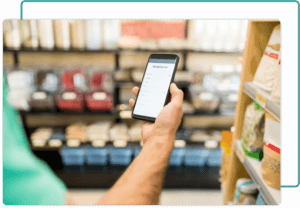
Efficiency is a keyword in business. In every industry the goal is to improve the outcome of work at a minimal cost. For companies with many deskless employees (like in retail) a good way to do this is to implement digital tools such as task management mobile applications. Retail operations are a very broad concept but luckily there are many parts of it that can be easily optimised.
Retail operations are all the activities which make a store run smoothly. They include daily tasks such as: opening procedures, replenishment, cleanliness, food safety, weekly promotions, product inventory, supply chain, layout, customer service, internal audits, and more. All of them can support better decisions by digitising time-consuming internal tasks to achieve operational excellence - increase sales and customer satisfaction as well as reduce costs.
Store operations consist of many small daily activities that together make up the bigger picture - simply: retail is detail. Organising all of them for every store employee is the key to success. Well designed tasks with notifications will remind employees about the performance of regular procedures such as store opening and closing or cleanliness, will give them exact step-by-step guidelines and will support honest reporting of compliance by photo confirmation and a timestamp to make sure that they are executed to the highest standard.

Also, shelf planograms execution is much more efficient when done with a special tool. A dedicated task can be assigned on a regular or an ad-hoc basis. An employee takes a photo of the shelf, machine learning algorithms compare it with the planogram then gives the feedback directly to the store employee in just a few seconds.
Specialised mobile apps like TakeTask can also facilitate conducting objective internal audits by the field auditors. All deviations from the standard are recorded in the form of a photo with a commentary and sent as an automatically created task to store employees for improvement.
In a suitable mobile app tasks are supported by a wide range of features to simplify their performance. Time-consuming activities are organised and listed e.g. in digital checklists so they can be completed more easily. Replacing paper forms with the application helps to prioritise work as well as prevent the duplication of tasks on the store level.
Tasks initiate only in the proper location and at a specific time which proves their correct execution. Taking photos allows easy and objective confirmation of task completion. Photos can be evaluated by managers or by systems based on neural networks.
Many technologies can also be useful in optimising reporting. There is a wide range of features such as: OCR, EAN and QR code scanner, Machine Learning based Real Time Image Recognition, IoT e.g. connected thermometers, e-mail and SMS distribution platforms. This is only the beginning of possibilities.
At the same time, we need to remember that too much technology can cause confusion for the user. The same applies to having too many technologies with a narrow scope. They are introduced in workplaces without taking into account the comfort of employees. Forcing them to use many applications reduces the potential and efficiency of work. What is needed are systems that bundle such technologies and allow their efficient use in one interface as a gateway.
Then, not only does the deskless employee’s work become easier, the collected data is more accurate and more reliable. In the TakeTask mobile app it is confirmed by location and a timestamp, so that managers can always be sure that the assignment was filled in at the reported time, rather than being completed in a hurry after being forgotten.

Managers can work remotely but react in real-time having access to all the information and data instantly and in one source. They can create ad-hoc tasks for store employees or schedule their work in the mobile app based on the current situation at the stores. Head Offices gain real-time control over the performance of each task, which raises the standards in the entire retail chain.
Thanks to these little steps, work efficiency can be increased and working time saved, meaning lower costs. All procedures are performed well, resulting in increased product visibility and cleanliness as well as a better customer experience. Good analysis brings better planning and work scheduling (the latter is, in many cases, is still done manually!).
What is also important, employees’ satisfaction is raising. They don’t have to use multiple communication channels to determine their tasks. Since their work is organised and supported with guidelines and notifications, they are not overwhelmed with work. This reassurance significantly increases their motivation.
A good example of in-store operations optimisation are everyday tasks introduced by Rossmann, one of the biggest pharmacy chains in Poland. Store employees get assignments with morning and evening routines in the mobile app. Tasks include replenishment and cleaning activities and the changing of marketing materials. Thanks to digitisation, routines are standardised and organised to be performed in the same way across all of their stores.
A big change is also the local optimisation of task management at store level. Many companies still use cork boards, where the most important information for the team is placed on a Post-it Note. After the morning check-in, the boards also indicate the responsibilities of the employee for that day - who works on the checkout, who puts the goods on display and who changes promotions.
Not so long ago, pharmacy store Hebe started digitisating management of their teams with TakeTask instead of using cork boards. It allows managers to check what is happening in their store while they are away. Regional managers also have a better overview because all information is available online in real-time.
Find out more about in-store operations optimisation provided by TakeTask.